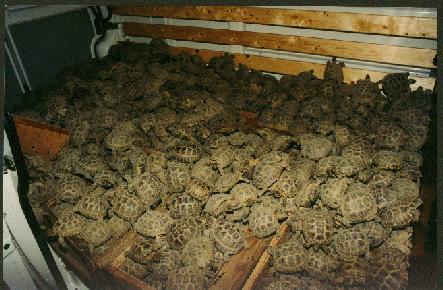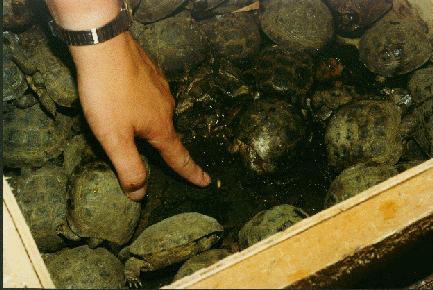CITES and the Tortoise and Turtle Trade
WIL LUIIJF
TRAFFIC Europe Enforcement Project,
Barbaralaan 120, 4834 SM - P.O. Box 4625, 4803 EP Breda, The Netherlands
e-mail: epicurus@antenna.nl
ABSTRACT: The expanding international wildlife trade has contributed significantly to the decline of many tortoise and turtle populations in the wild. Regulations set forth by the Convention on Trade in Endangered Species (CITES) could be used as a tool to help stem these declines, but serious problems in enforcement have prevented their successful application. While serving as a CITES enforcement officer, the author made observations in the course of day-to-day inspections of wildlife shipments. These are reported here as a series of case studies that document many of these enforcement failures. These cases also reveal extensive failures in compliance with the International Air Transport Association (IATA) Live Animals Regulations for the proper air transport of chelonians. The consequent inhumane and often deplorable conditions frequently result in the death of high numbers of the transported animals.
|
 |
In a shipment from Kazakhstan to the USA (intercepted in Amsterdam), 3,000 Testudo horsfieldii were packed in 60 crates; 127 were dead.
|
|
In this shipment en route from Tanzania to the USA (seized in Amsterdam), 511 pancake tortoises, Malacochersis tornieri, in extremely poor condition, were packed in layers on top of one another. |
 |
 |
A shipment of 500 Testudo horsfieldii, en route from the former USSR
to Hong Kong, was opened because of the foul odor emanating from the cartons. In this photo the inspector points to a maggot at the bottom of the crate.
|
|
In addition to the crushed animals in this same shipment of 500 Testudo horsfieldii, numerous individuals had fractured carapaces, crushed skulls, and severed limbs. |
 |